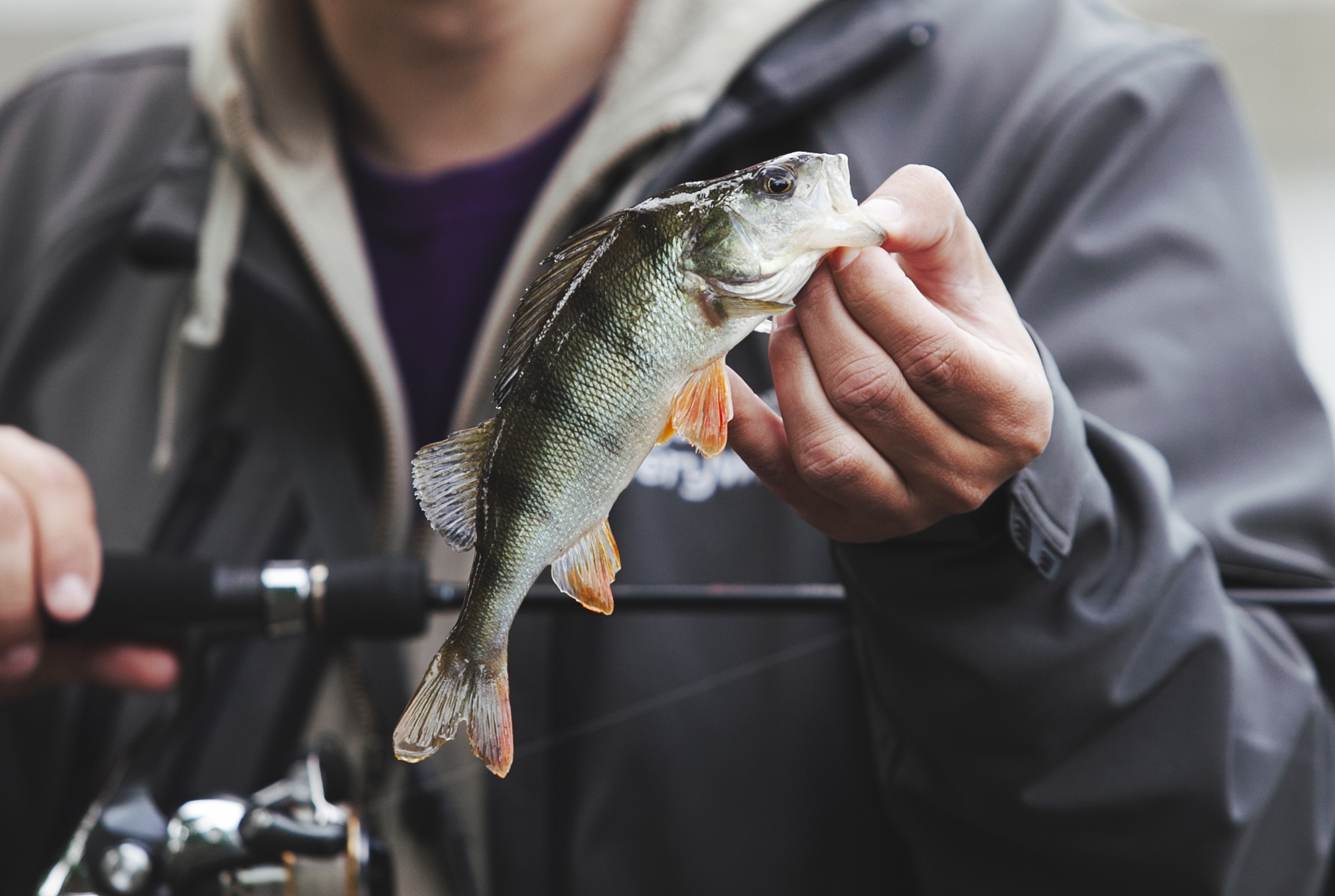- Home
- Blog
- Material & Life
- Why TPE is the perfect material for your Fish Bait
Why TPE is the perfect material for your Fish Bait
2024-07-30

Photo by Freepik
As much as it is about skill and patience, a significant factor in ensuring a successful fishing trip is the bait you choose. The right bait can make all the difference.
Some people prefer live bait, claiming it's the most effective way to catch fish. For beginners, live bait is a great starting point. It's easy to use and highly attractive to fish. However, as any seasoned angler knows, using live baits comes with challenges. It can be expensive, time-consuming, and quite messy to handle, especially during longer fishing trips. Furthermore, sourcing live baits each time you fish can be inconvenient.
On the other hand, artificial baits have gained huge popularity for their convenience and long-lasting durability. Unlike live bait, artificial bait can be reused multiple times, making it more cost-effective in the long run. Professionals often prefer artificial bait as it allows them to target specific fish species by selecting the exact type of bait the fish are most likely to respond to.
Along the decades, artificial baits have evolved. In the past, hard baits made from metal, wood, or hard plastics were commonly used. These were effective in their time but lacked the ability to mimic the natural movement of live bait. Over time, people experimented with soft plastics, which proved to be more effective at imitating the behavior and look of live bait in the water. Soft plastics provide more lifelike motion and flexibility, increasing the chances of attracting fish.
For small-scale production, many people would hand-pour molten plastic into molds to create soft baits. However, for mass production, this process isn't the most efficient. TPE (Thermoplastic Elastomer) has been one of the most common materials used for producing fish baits. Here's why:
Able to Float on Water — The TPE designed for fish baits has a specific gravity lower than 1 g/cm³, which means it naturally floats on water. This is an important feature for fishing baits, as it helps keep the bait at the surface or suspended at the ideal depth where fish are most likely to bite.
Easy to Process — TPE can be easily processed using common plastic manufacturing techniques such as injection molding. This allows manufacturers to produce large quantities of fish baits with consistent quality and precision. The ease of processing TPE makes it a perfect material for high-volume production without sacrificing performance or design.
Environmentally Friendly — TPE is non-toxic, meaning it won't harm fish or the environment. As fishing baits are often used in water, it's important to ensure they don't introduce harmful substances into aquatic ecosystems. TPE's eco-friendly nature gives peace of mind to anglers who care about the sustainability of their fishing practices.
Stretchiness and Flexibility — TPE's remarkable stretchiness and flexibility make it the ideal material to mimic the natural movement of live bait in water. Fish baits made from TPE can bend, stretch, and move with ease, creating lifelike action that attracts fish. The fluid motion of TPE baits can be more effective than rigid, traditional hard baits.
Phon Tech's TPE Key Advantage
Some anglers complain that fish baits made from TPE can melt or deform under the heat of the sun. However, Phon Tech's TPE has been specially formulated to withstand such temperatures. Our material has been tested and proven not to melt after 4 hours in an oven at 50°C, equivalent to a hot sunny day during an afternoon fishing trip. This ensures your baits to maintain their shape and effectiveness, no matter how hot it gets outside during your fishing journey.
At Phon Tech, we have years of experience in formulating TPE specifically for fish baits. We understand the unique demands of the fishing industry and are dedicated to providing a product that suits your expectations. To discuss how we can assist with your needs, feel free to reach out to us. Our team is committed to helping you find the perfect solution for your fish bait production needs.
Find out more about our Transparent Series for Fish Baits
As much as it is about skill and patience, a significant factor in ensuring a successful fishing trip is the bait you choose. The right bait can make all the difference.
Some people prefer live bait, claiming it's the most effective way to catch fish. For beginners, live bait is a great starting point. It's easy to use and highly attractive to fish. However, as any seasoned angler knows, using live baits comes with challenges. It can be expensive, time-consuming, and quite messy to handle, especially during longer fishing trips. Furthermore, sourcing live baits each time you fish can be inconvenient.
On the other hand, artificial baits have gained huge popularity for their convenience and long-lasting durability. Unlike live bait, artificial bait can be reused multiple times, making it more cost-effective in the long run. Professionals often prefer artificial bait as it allows them to target specific fish species by selecting the exact type of bait the fish are most likely to respond to.
Along the decades, artificial baits have evolved. In the past, hard baits made from metal, wood, or hard plastics were commonly used. These were effective in their time but lacked the ability to mimic the natural movement of live bait. Over time, people experimented with soft plastics, which proved to be more effective at imitating the behavior and look of live bait in the water. Soft plastics provide more lifelike motion and flexibility, increasing the chances of attracting fish.
For small-scale production, many people would hand-pour molten plastic into molds to create soft baits. However, for mass production, this process isn't the most efficient. TPE (Thermoplastic Elastomer) has been one of the most common materials used for producing fish baits. Here's why:
Able to Float on Water — The TPE designed for fish baits has a specific gravity lower than 1 g/cm³, which means it naturally floats on water. This is an important feature for fishing baits, as it helps keep the bait at the surface or suspended at the ideal depth where fish are most likely to bite.
Easy to Process — TPE can be easily processed using common plastic manufacturing techniques such as injection molding. This allows manufacturers to produce large quantities of fish baits with consistent quality and precision. The ease of processing TPE makes it a perfect material for high-volume production without sacrificing performance or design.
Environmentally Friendly — TPE is non-toxic, meaning it won't harm fish or the environment. As fishing baits are often used in water, it's important to ensure they don't introduce harmful substances into aquatic ecosystems. TPE's eco-friendly nature gives peace of mind to anglers who care about the sustainability of their fishing practices.
Stretchiness and Flexibility — TPE's remarkable stretchiness and flexibility make it the ideal material to mimic the natural movement of live bait in water. Fish baits made from TPE can bend, stretch, and move with ease, creating lifelike action that attracts fish. The fluid motion of TPE baits can be more effective than rigid, traditional hard baits.
Phon Tech's TPE Key Advantage
Some anglers complain that fish baits made from TPE can melt or deform under the heat of the sun. However, Phon Tech's TPE has been specially formulated to withstand such temperatures. Our material has been tested and proven not to melt after 4 hours in an oven at 50°C, equivalent to a hot sunny day during an afternoon fishing trip. This ensures your baits to maintain their shape and effectiveness, no matter how hot it gets outside during your fishing journey.
At Phon Tech, we have years of experience in formulating TPE specifically for fish baits. We understand the unique demands of the fishing industry and are dedicated to providing a product that suits your expectations. To discuss how we can assist with your needs, feel free to reach out to us. Our team is committed to helping you find the perfect solution for your fish bait production needs.
Find out more about our Transparent Series for Fish Baits
Article Classification
Recent Articles
- TPE Menstrual Cups: The Future of Sustainable Period Care
- Elevate your cosmetic packaging with PHOENIX TPEs
- Luggage wheels with PHOENIX™ TPE can take you further
- Let our Static Dissipative TPE & Conductive TPE enrich your product design
- Why TPE is the perfect material for your Fish Bait
- TPEs: Ideal Materials for Syringe Gasket Applications
- How does TPEs help you relax from the daily
- Understanding GHG Emission Quantification and Verification
- PHOENIX™ TPEs care about you, because you are our baby.
- GRS & RCS: Certification For Recycled Materials
- PHOENIX Materialize Your Vision for Sustainable Future
- PHOENIX™ Antimicrobial TPEs help you combat bacteria
- To fast display yourself on the PHOENIX™ TPEs material-made product.
- Learn TPE from daily dental care
- TPE - The Small but Important Piece in Bottle Caps
- Life Matters: High-quality PHOENIX™ TPEs for Medical Applications
- The crucial elements in human life
- The indispensable utensils in the KITCHEN
- The recyclability of PHOENIX™ TPEs
- A Peek Into A Ballerina's Dance Bag
- How to discover the Phoenix™ at 2021 Tour De France!?
- TPE: Enjoy cycling with comfort grips
- Your great company during Covid-19 pandemic!!
- TPE: Why Does It Matter To The Hospital Bed Caster
- Compression Set of Thermoplastic Elastomers

